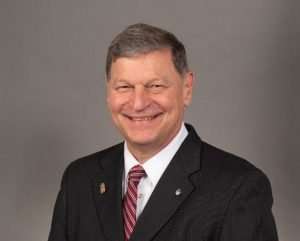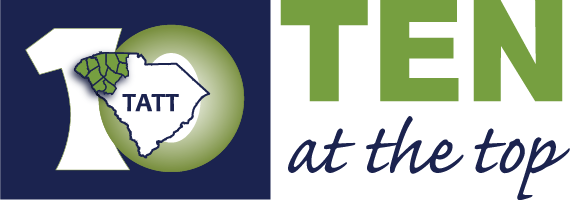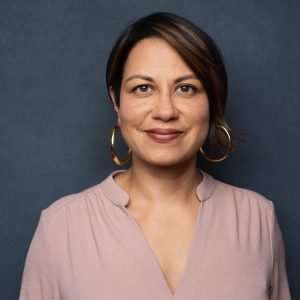
VCOM—Spartanburg’s Medical School with a Distinct Mission

Tim Kowalski, DO, D.FACN, Vice Provost for Professional and Public Affairs and Founding Dean of the VCOM-Carolinas Campus
by Tim Kowalski, Vice Provost for Professional and Public Affairs and Founding Dean of the VCOM-Carolinas Campus, with Sharon Purvis
The Edward Via College of Osteopathic Medicine (VCOM), located in Spartanburg, is “to prepare globally-minded, community-focused physicians to meet the needs of rural and medically underserved populations and promote research to improve human health.” We asked VCOM’s founding dean, Tim Kowalski, to talk about how the school fulfills that mission here in the Upstate and what sets it apart from other medical schools.
Q: VCOM, with its four campuses (at Virginia Tech, Auburn University, University of Louisiana–Monroe, and in Spartanburg), is one of the largest medical schools in the country in terms of enrollment. Can you talk about what sets VCOM apart from other medical schools?
VCOM offers the Doctor of Osteopathic Medicine degree (DO), a degree historically established in 1892 to differentiate its training and philosophic approach to the practice of medicine from that offered within allopathic medical schools offering the Doctor of Medicine (MD) degree at the time. The osteopathic approach offered drugless musculoskeletal manipulative therapy to enhance the body’s inherent capacity to heal from within, in lieu of the then standard-of-care, which employed unresearched “best practice” treatments like poisonous drugs (such as mercury), blistering, and bloodletting. Osteopathic treatment, developed by A.T. Still, MD, was a disruptive approach to the practice of medicine that was met with significant resistance.
At the end of the 19th century, infectious diseases claimed the lives of many patients, but the development of antibiotics, other evidenced-based pharmaceutical treatments, and improvements in surgery has led to increased life expectancy and quality of life. While maintaining its distinctive philosophical approach in educating physicians, osteopathic medicine has embraced all evidence-based treatments available today. Osteopathic physicians are fully licensed in all 50 states and are board certified in all specialties and subspecialties from family medicine to surgical specialties.
VCOM’s successful mission to produce primary care physicians for underserved communities has been recognized by the US News and World Report —it is currently ranked 8th place among U.S. medical schools whose graduates enter primary care residencies. Boasting a 3-year rolling average of 63% of graduates entering family medicine, internal medicine or pediatrics, VCOM has averaged a top ten placement in the USNWR rankings for the last 10 years
Q: The VCOM campus in Spartanburg is strategically placed, anchoring the Northside Initiative. How does that support your mission?
Partnering with the City of Spartanburg, the Spartanburg Regional Health System, and Wofford College, VCOM chose to build what now has become its 25-acre campus in the once blighted northside neighborhood of Spartanburg. As a private not-for-profit medical school, VCOM broke ground in February 2010 on the site of the old Spartan Mills property, whose iconic smokestack stands sentinel to VCOM’s nearly 1000 graduates as of this past May. VCOM is proud to have been the catalyst to and a founding member of what has become the Northside Development Group (NDG).
Working strategically with northside residents, the NDG has developed mixed housing, the Monarch Café and Farmers Market, the Franklin School for early child development, and the TK Gregg Community Center with indoor pool. Moreover, construction of additional mixed-use retail/housing and clinic are nearing completion across the street from VCOM.
Spartanburg serves as the mission hub for VCOM to produce globally minded, community focused physicians and to conduct research to improve human health. Improving population health by mitigating social inequities through a positive annual economic impact of nearly $60 million dollars in the state, providing care through our soon-to-open Northside Clinic, and pursuing funding to develop clinical research are examples of a few of the ways VCOM is striving to meet its mission objectives.
Q: What unique challenges does a medical school such as VCOM face during a pandemic like the one we’re in now? How have you addressed those challenges?
In preparing to accept students back to campus, VCOM offered the first two weeks of curriculum online while our students remained physically isolated in their Upstate residences and were monitored for evidence of COVID-19 symptoms. We continue to monitor all students, faculty, and staff daily through our My-Health-Tracer webpage prior to being cleared to enter our building wearing a face covering.
Six-foot social distancing is achieved by splitting the day in half with live streaming of in-person lectures between both classrooms (with half of the chairs removed). All students have the option of viewing each lecture online instead. Labs are broken down into small groups that include the same individuals and faculty with appropriate PPE. A critical part of physician training involves hands-on skills, and VCOM has found creative, safe ways to provide this preclinical training to our students to include simulation and physical examination.
Patient actors offer real-time, video-captured simulated telemedicine sessions that are reviewed with monitoring faculty that allow us to assess students skills in the biomedical and humanistic domains of the doctor-patient encounter. Students study off-campus following lectures, labs, and appropriately social distanced exams are proctored on-campus. Our upper level students complete their clinical rotations in the clinical learning environments of hospitals and office-based care facilities with appropriate PPE and following all required standards to prevent spread of infection.


